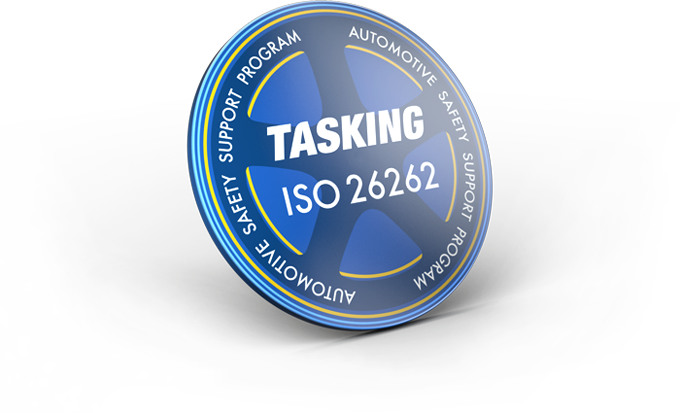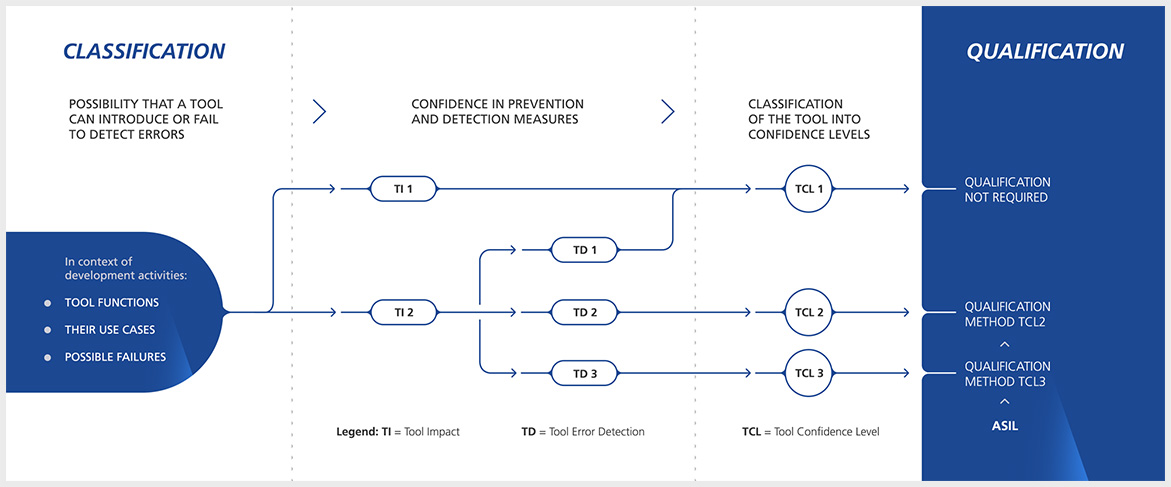Overview

ISO 26262 is your ticket to credibility in the automotive industry. TASKING offers a number of solutions to help you achieve certification in the shortest amount of time and at the lowest possible cost. With ISO 26262 certification, your software will be stamped ready for use in the most complex automotive applications that require the highest standards for safety, reliability and performance.
The recommended tool qualification methods depend on the TCL/ASIL (Automotive Safety Integrity Level). They are shown below. (+ = recommended, ++ = highly recommended)
| Qualification methods | ASIL A + TCL 2/3 | ASIL B + TCL 2/3 | ASIL C TCL 2 | ASIL C TCL 3 | ASIL D + TCL 2/3 |
|---|---|---|---|---|---|
| Increased confidence from use | ++ | ++ | ++ | + | + |
| Evaluation of the tool development process | ++ | ++ | ++ | + | + |
| Validation of the software tool | + | + | + | ++ | ++ |
| Development in accordance with a safety standard | + | + | + | ++ | ++ |

